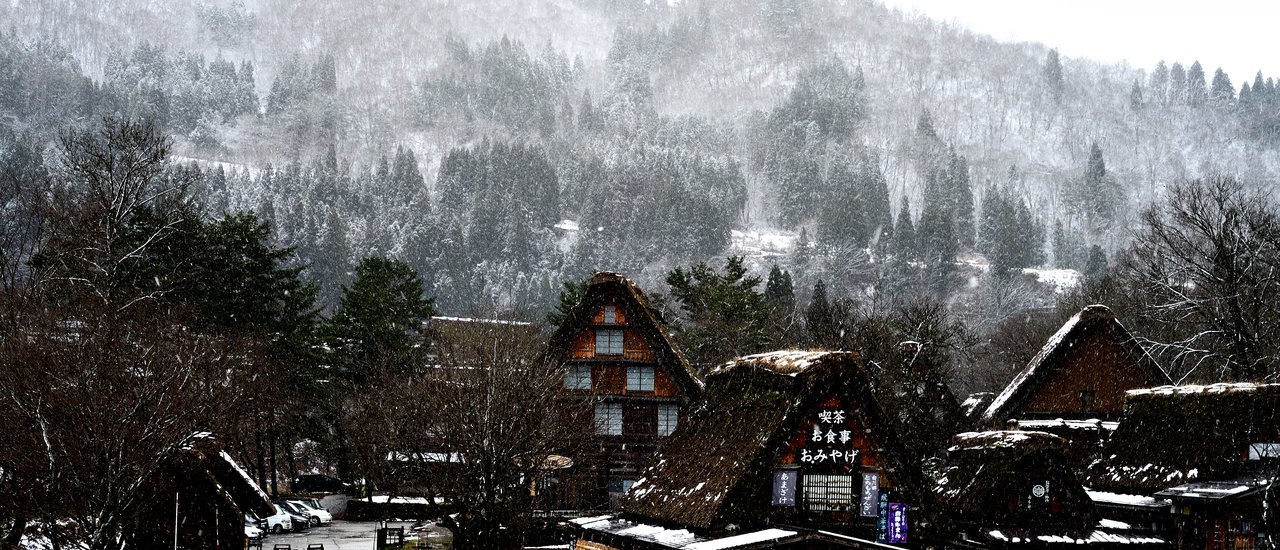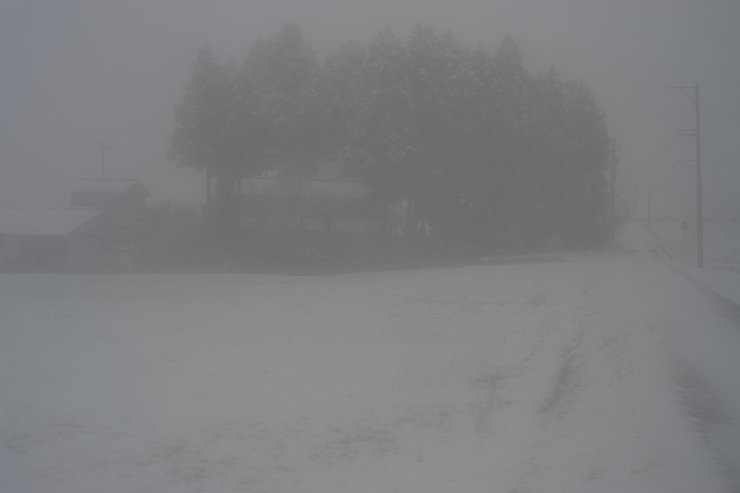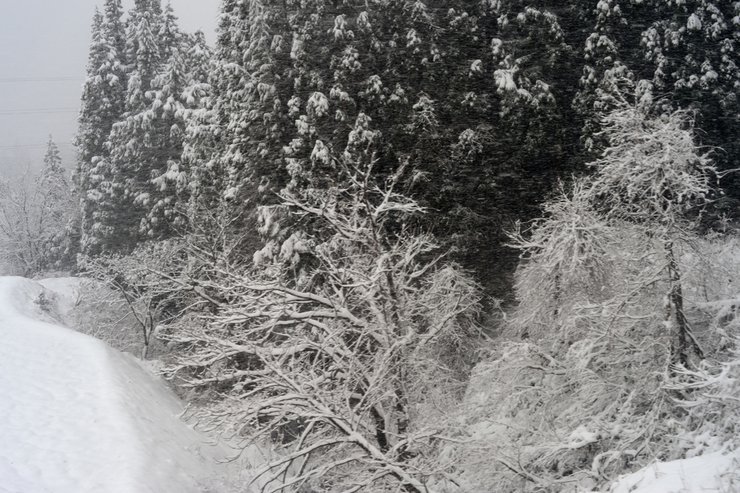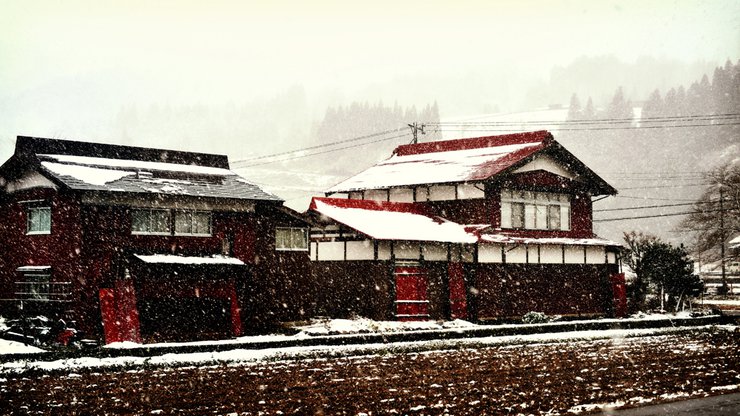
Shirakawa-go, also known as the "White River Village," is a picturesque village nestled in the mountainous Gifu Prefecture. During the winter months, the village is blanketed in snow, creating a breathtaking scene of traditional gassho-style houses with snow-covered roofs. The image of these illuminated houses against the backdrop of a snow-covered landscape has become synonymous with Japanese winter tourism, attracting visitors from all corners of the globe. This UNESCO World Heritage Site offers a tranquil escape, welcoming tourists throughout the year.

Shirakawa-go, a popular tourist destination for both Japanese and international visitors, is located in a remote valley. Due to its inaccessibility by train, the only way to reach the village is by car or public transportation. As one of Japan's most significant tourist attractions, "where the train does not reach," Shirakawa-go is accessible by regular buses that operate between two major regional cities: Takayama and Kanazawa. Most tourists choose to stay in Kanazawa and purchase bus tickets, or take a train to Takayama from Tokyo or Nagoya and then purchase bus tickets. We followed the same route as other tourists, opting for the latter option.
As I mentioned earlier, Shirakawa-go is a popular tourist destination for both Japanese and international visitors. Although we chose to travel on a weekday, it was the last week before the New Year, when people are eager to see the snow. As a result, we encountered the "sold-out" experience for a whole week. If we had waited, we would have had to change our entire travel plan. We were staying in Kanazawa for only two nights and had chosen a weekday to visit Shirakawa-go because we thought it would be less crowded. In fact, the Japan National Tourism Organization website recommends booking bus tickets online with Nohi Bus in advance at www.nouhibus.co.jp. However, by the time we had finalized our plans in early December, the Nohi Bus website was inaccessible and advance bookings were not possible. If we had booked in advance when we first considered going, there would have been no problem. But who would book that far in advance, given the need to finalize plans, clear work schedules, and arrange long holidays? In the end, we missed out on Shirakawa-go as planned. Our backup plan was to either drive there, stay in Kanazawa, or take the Shinkansen to other nearby attractions.

After making the decision, I went to the Toyota center opposite Kanazawa Station, where we were staying, to rent a car. This hotel is very convenient. I will write a review later when I have time. Let's get back to renting a car. After I contacted the center, they asked about my experience driving in the mountains. I have been to Chiang Mai, Isan, Doi Inthanon, and Phu Thap Berk. No, that's not what the staff at the center meant. They meant experience driving in a snowstorm, as the weather forecast said it would snow heavily throughout the week before New Year's. I said it was okay, I wanted to try, but they didn't recommend it because it was already afternoon and the snow would be very heavy. It was the first snow after it had stopped since the beginning of the month, so there would probably be no cars to clear the way. Another reason the staff gave was that there would be both a snowstorm and traffic jams because there were a lot of people traveling during this time. They gave me this information after I had already made my decision. Well, with such detailed information, I looked at my sweetheart with my lung disease and said, "No, thank you. Goodbye."
I have given up on Shirakawa-go, and I am planning to visit other places around Kanazawa. However, my wife, Padiwarat, is not easily discouraged. I would like to thank the staff at the Kanazawa Tourism Promotion Center. Although few people in Kanazawa speak English, the staff at the center were very helpful. After my wife dragged me to talk to the staff, we finally learned that there is another way to get to Shirakawa-go: from Takaoka instead of Takayama. We can take the Shinkansen to Shin-Takaoka Station, outside Takaoka City, and then take a regular bus to Shirakawa-go. However, we have to take a chance because we cannot book tickets for the bus. It also takes longer to travel, and there are fewer buses. I wondered if we should take the risk. What if there is no bus back? What if we don't book tickets in advance on a day with many tourists? We would be stuck in the snowstorm, which would not be fun. I was afraid of everything. While I was standing there, stressed and trying to make a decision, my wife came back with Shinkansen tickets to Shin-Takaoka Station. She said, "Don't think too much about it. Let's go." Instead of going on a weekday, we went on the following Sunday. My wife didn't care about the number of tourists. When she wants to go, nothing can stop her.


The journey begins at Kanazawa Station, where you can take the Hokuriku Shinkansen for about 30 minutes to Shin-Takaoka Station. From there, buses depart for various destinations, including Shirakawa-go. Unlike the Nohi Bus, reservations are not available for this route, so it's a gamble. However, this bus also passes through two other World Heritage villages: Ainokura and Suganuma. Surprisingly, even though we traveled on a Sunday, the bus was not full. Shin-Takaoka Station felt deserted, with fewer people compared to the Takayama route. This route also passes other World Heritage villages, and you can take a train to Johana, another beautiful town on the way to Shirakawa-go. On our return trip, we also visited Takaoka, a hidden gem. We must thank my partner for taking the risk and choosing this route. Although this route passes through many attractive towns and villages, it's impossible to see them all in one day. Moreover, the day we went, there was a heavy snowstorm, so we had to abandon our plans to visit Johana and other villages. Our goal was simply to reach Shirakawa-go and have half a day in the afternoon to explore Takaoka on our way back. I highly recommend purchasing a round-trip ticket, which is 1,000 yen cheaper than buying separate tickets. This ticket, called the Gokayama-Shirakawago Free Kippu, costs 3,500 yen and allows you to hop on and off at any location along the route. You can purchase the ticket on the bus. There weren't many people on our trip; we were accompanied by a group of Thai and Indian tourists, as well as some Japanese and Chinese tourists. The bus was empty, but it filled up along the way as people boarded from different stops.
The weather forecast here is very accurate. From the clear sky in Kanazawa, snow began to fall lightly as we arrived at Shin-Takaoka Station (there is an Aeon mall right at the corner when you exit the station, so you can stop by for a meal or some shopping). As the car continued on its way, the snow began to fall more heavily, especially on the narrow mountain roads. It was a good thing we didn't rent a car ourselves. The entire route was covered in white. In fact, if you drive yourself, you can take the expressway, which doesn't take long and is probably safer. However, you wouldn't get the view that I did. The snow that fell all along the way created many beautiful white landscapes on both sides of the road. However, the downside is that the snow made the already slow traffic even slower. In total, it took us two hours to reach Shirakawa-go, as planned.






After passing through a snowy forest that automatically turned our photos into black and white, we finally arrived at Shirakawa-go village. However, upon arrival, we were slightly disappointed. The snow in Shirakawa-go had only recently started to fall and was not as heavy as the snow we had seen along the way. We thought it might have been better to get off at Aizuwakamatsu, as the snow there seemed to be heavier based on what we saw from the bus. However, we had to make the landmark here, otherwise it wouldn't be right to say we had been here.
Shirakawa-go is as beautiful as its reputation. Aside from the freezing temperatures and constant snowfall like in Korean dramas, there's not much more to it. You might experience the authentic atmosphere of the ancient Japanese countryside, but it's truly stunning only on clear days. Taking pictures with the snow-covered landscape or during the night with lights from houses (which means staying overnight) would be ideal. The light displays are usually held in mid-January, so if you want to experience Shirakawa-go with all its options, you should visit between January and February. Stay overnight because the buses stop running after six o'clock. On days without snowfall, the view of the clear sky and white snow is even more beautiful. Let's explore different parts of the village.
















For other regular routes, they are the same as the Nohi Bus routes that run between Kanazawa and Takayama. However, there is one route that I would highly recommend, which is the journey from Nagoya. This route is very convenient, but it may be a bit far. I recommend taking the route between Toyama and Nagoya. Take an express train from Nagoya to stay in the city of Gero first, and then stay in the city of Takayama, which is not far from Shirakawa-go. (But it does not pass through the villages of Ainokura and Suganuma). Then from Takayama, you can end your journey in the city of Toyama, another major city in Japan. From Toyama, you can choose to take the Shinkansen to Kanazawa or Tokyo.
https://www.facebook.com/thetravelbagstory/





TravelTherapy
Wednesday, October 9, 2024 5:57 PM
















